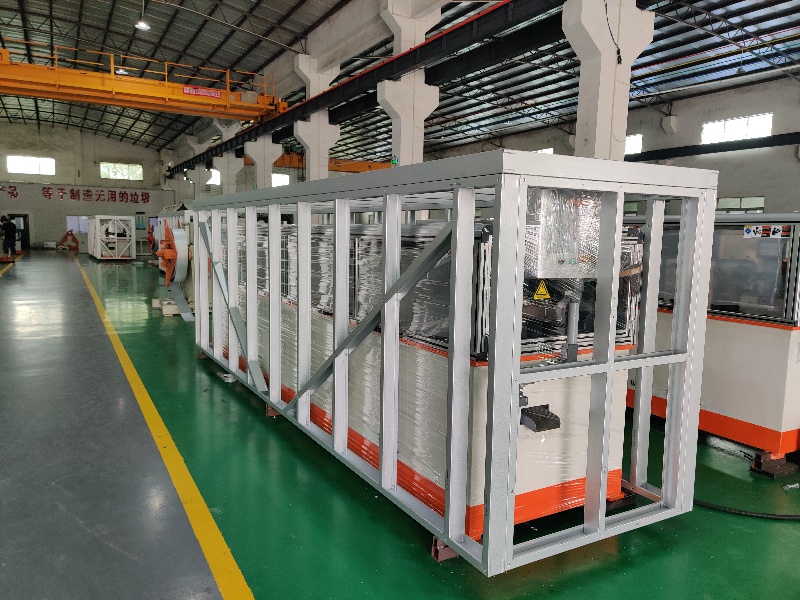Hotline
+86-136 8495 9862
Email:cennia@szmizhi.com
Add::104,Building 27,Third Industrial Zone, Longxi Community,Longgang District,Shenzhen,China.
Coil Forming & Handling Equipment
Surface Treatment Equipment
Solutions
Application
About Us

Welcome to MIZHI
For consultation/feedback, please call the service hotline: +86-136 8495 9862 Email:cennia@szmizhi.com

Steel framing has become an increasingly popular construction method due to its numerous advantages, and at the heart of this process lies the steel framing machine.
A steel framing machine is a complex and sophisticated piece of equipment that is designed to fabricate steel frames with high precision and efficiency. The machine typically operates on a principle that involves cutting, punching, and shaping steel components to create the framework for various structures.
One of the key aspects of a steel framing machine is its cutting mechanism. This can include various cutting tools such as saws or laser cutters. Saw - based cutting systems are common and can be either circular saws or band saws. Circular saws are known for their ability to make quick and relatively clean cuts through steel beams and columns. Band saws, on the other hand, offer more flexibility in cutting complex shapes and can handle thicker sections of steel. Laser cutters provide extremely high precision and are capable of creating intricate designs. They work by using a focused laser beam to melt or vaporize the steel at the cutting point. This allows for very fine details and smooth edges.

Punching is another important function of the steel framing machine. The punching unit is designed to create holes in the steel components for various purposes such as inserting bolts, screws, or other fastening devices. These holes need to be accurately positioned and sized to ensure a proper fit during the assembly process. The punching mechanism can be adjusted to create holes of different diameters and at different locations on the steel members. This flexibility is crucial as it allows for customization based on the specific design requirements of the structure being built.
Shaping is the process by which the steel components are bent or formed into the desired shapes. This can involve creating angles, curves, or other complex geometries. The shaping unit of the machine may use rollers, presses, or other forming tools. Rollers are often used to create consistent bends along the length of a steel member. Presses, on the other hand, can apply a large amount of force to deform the steel into a specific shape. This shaping ability is essential for creating the structural elements that make up the framework of a building, such as trusses, joists, and columns.
The steel framing machine also incorporates a control system that coordinates all of these operations. Modern machines often use computer - controlled systems that allow for precise programming of the cutting, punching, and shaping processes. This ensures that each steel component is fabricated according to the exact specifications of the design. The control system can also store multiple programs, making it easy to switch between different projects or production runs.
In terms of the materials used, the steel framing machine is typically designed to work with a variety of steel grades. Different grades of steel have different mechanical properties, such as strength, ductility, and hardness. The machine needs to be able to handle these variations to ensure that the fabricated frames meet the required structural standards. For example, high - strength steels are often used in applications where the structure needs to withstand heavy loads or extreme environmental conditions.
The efficiency of the steel framing machine is one of its main attractions. It can fabricate steel frames at a much faster rate than traditional manual methods. This not only saves time but also reduces labor costs. Moreover, the machine's ability to produce consistent and accurate components ensures a high quality of construction. This is crucial for ensuring the structural integrity and safety of the building.
During the operation of the steel framing machine, quality control measures are essential. This includes monitoring the dimensions of the cut, punched, and shaped components to ensure they meet the specified tolerances. Any deviations from the design requirements can lead to problems during the assembly process or compromise the structural performance of the building. Regular inspection and calibration of the machine's components are also necessary to maintain its accuracy and reliability.
In conclusion, the steel framing machine is a vital tool in the construction industry. Its ability to cut, punch, and shape steel components with high precision and efficiency has revolutionized the way steel frames are fabricated. By enabling the production of custom - designed and high - quality steel frames, this machine has contributed to the growth and development of modern construction methods.